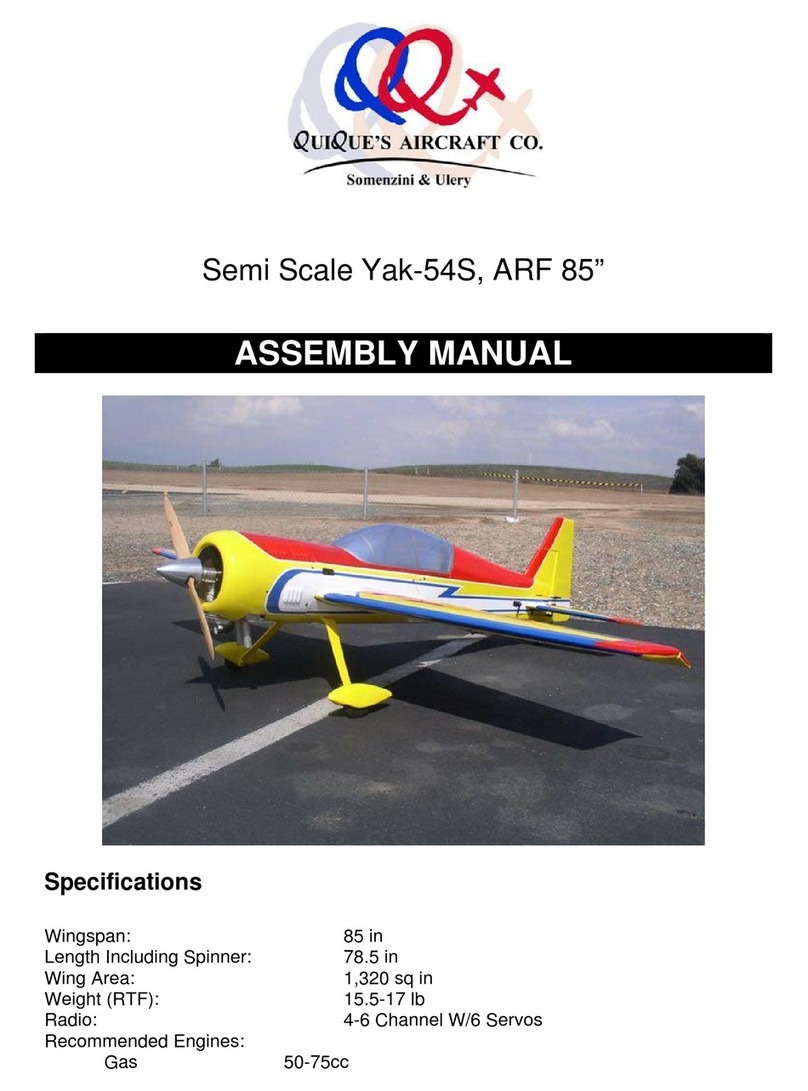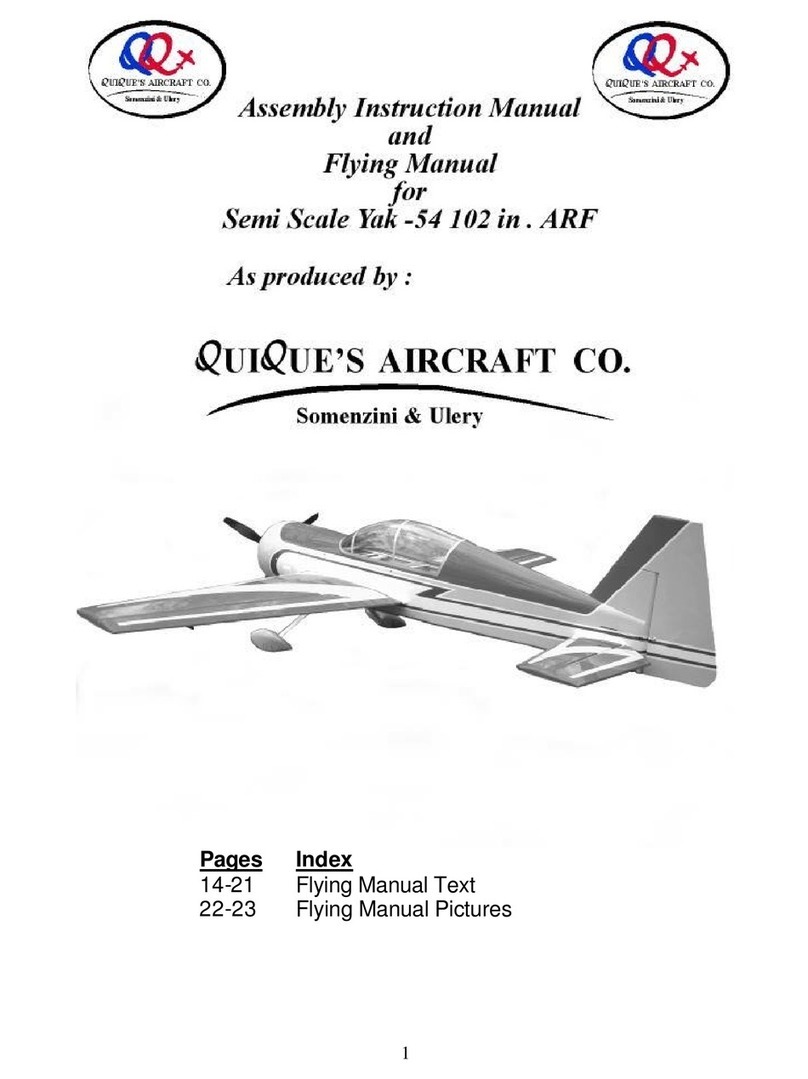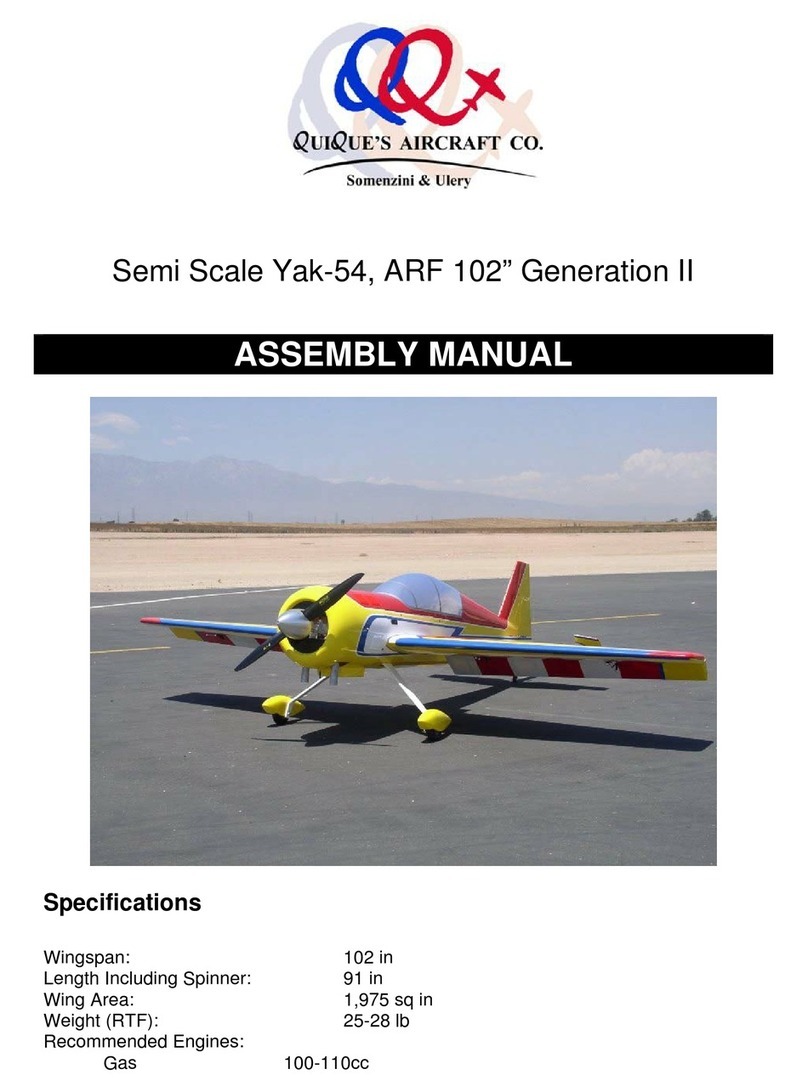
Preparing the Fuselage
Required Tools and Adhesive
•Xacto Knife, #11 Blade
•Sealing Iron
•Fine line Marker
•Medium CA
Preparing Fuselage
In this step, we are going to remove
covering from the Fuselage which will allow
access for different components in coming
steps.
1. Remove Covering from Fuselage
where wing will be inserted. First
drawing a line about ½” inside the balsa
opening, matching the contour of the
airfoil.
2. Using a Xacto knife with a new #11
blade, cut away covering from both
sides of the Fuselage.
3. Using your Sealing Iron, fold the ½”
covering inward onto balsa wing
opening and seal down in small 1-2”
segments until completed. FIG 1
4. Complete this step if you plan to install
Tuned Pipes/Canisters into your model.
Following procedures from previous
step, simply mark and cut covering ½”
inside the exhaust outlet located on the
bottom of Fuselage. Fold covering
inward and seal to the inside edges of
exhaust opening, you may consider
gluing the edge of covering with a very
small amount of CA to prevent covering
from lifting, due to heat. FIG 2
5. In this step we will cut open the 4
Canopy bolt holes located in the
fuselage (2 per side), using a pointed
#11 blade. First you will need to seal
around each hole then open each hole,
removing covering, with a Xactro knife.
After you have removed the covering
from these holes, re-seal the edges
with your Sealing Iron to prevent
covering from lifting later.
6. In FIG 3, you will need to remove
covering from the following areas on
each side of the Fuselage and seal the
edges with Sealing Iron.
•Rudder pull/pull slots
•Stabilizer tube holes
•Stabilizer bolt holes
•Stabilizer anti rotation pin holes
•Servo lead holes
FIG 1
FIG 3
FIG 2
9































